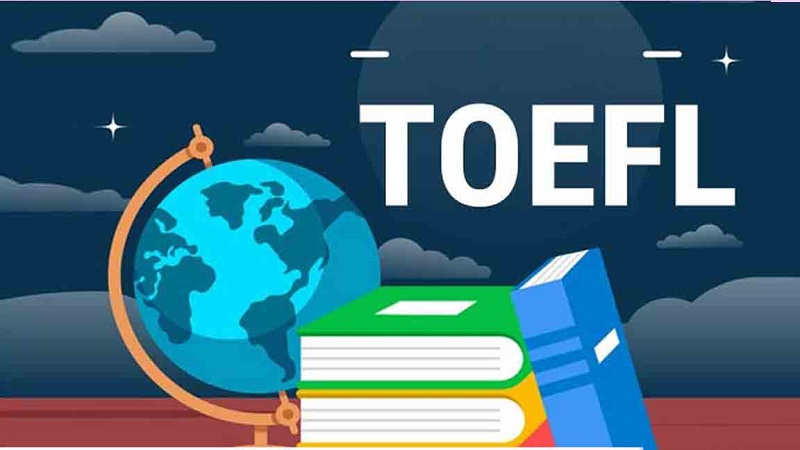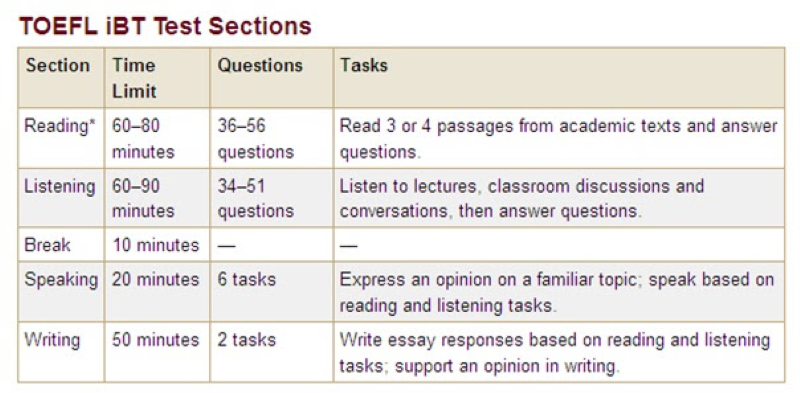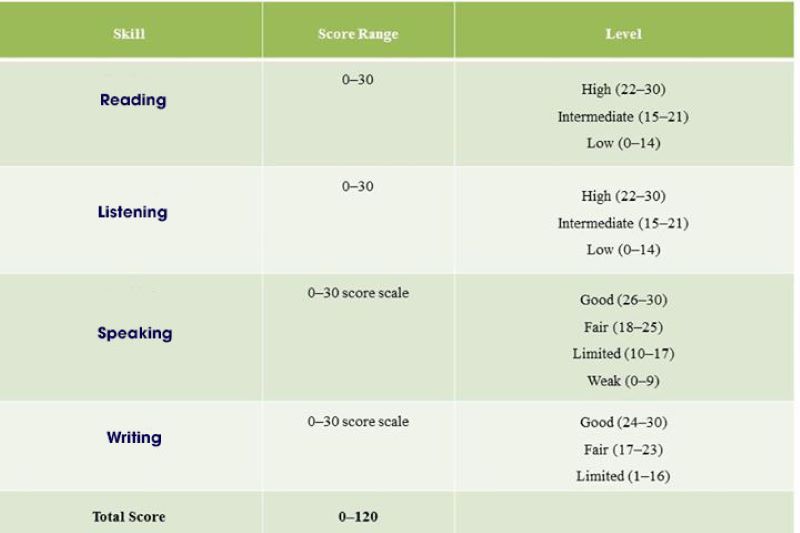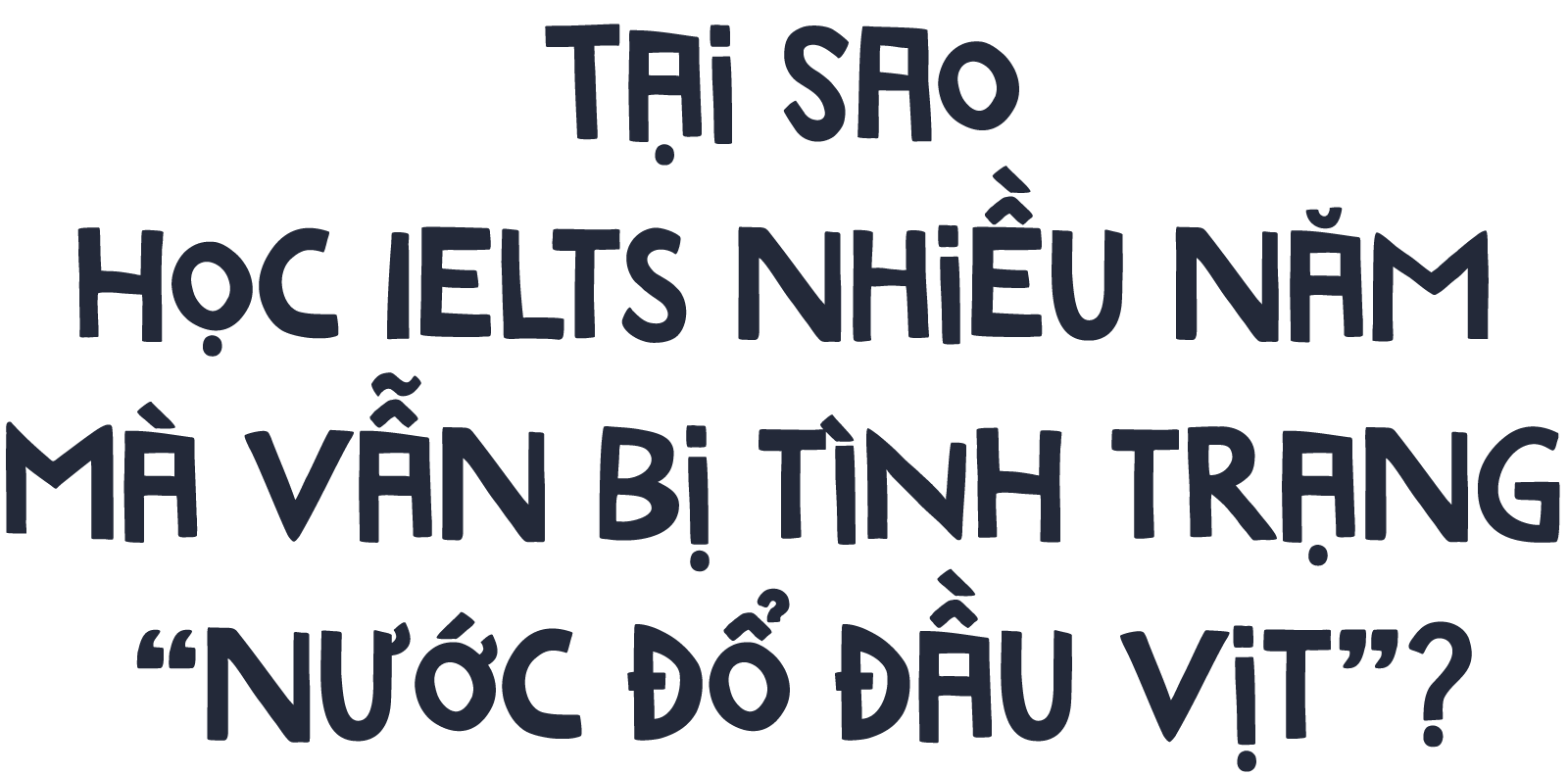Tương tự như các bài thi chứng chỉ quốc tế khác, đề thi TOEFL cũng yêu cầu thí sinh phải hoàn tất đủ 4 bài thi với mức độ câu hỏi được phân bố từ dễ đến khó. Hơn hết, các mẫu đề thi TOEFL còn được bác sĩ IELTS cập nhật liên tục theo từng năm, hỗ trợ tận tình cho thí sinh trong quá trình ôn luyện.

1. Sơ lược về bài thi TOEFL
Bài thi TOEFL là viết tắt của cụm từ Test of English as a Foreign Language, là dạng bài thi kiểm tra đánh giá năng lực, khả năng sử dụng Tiếng Anh của thí sinh trong môi trường học thuật, được sáng lập bởi Viện Khảo thí Giáo dục Hoa Kỳ (ETS). Tại Việt Nam, TOEFL được ETS ủy quyền tổ chức chính thức kỳ thi chứng chỉ này tại các trung tâm, văn phòng của IIG Việt Nam trên toàn quốc.
Hiện nay đang có tổng cộng 3 hình thức thi TOEFL khác nhau, tuy nhiên, TOEFL iBT vẫn luôn là hình thức được ưa chuộng nhiều nhất. Thí sinh đăng ký dự thi bài thi này sẽ thực hiện toàn bộ 4 kỹ năng trên máy tính. Trong suốt hơn 3 – 4 giờ đồng hồ, thí sinh cần trả lời đầy đủ tất cả những gì mình đọc, nghe được từ đề thi. Điểm thi sẽ được công bố sau đó khoảng 10 ngày và chứng chỉ có hiệu lực trong vòng 2 năm.
Bài viết liên quan
Lệ phí thi TOEFL
2. Cấu trúc của một đề thi TOEFL chuẩn
Theo ETS, đề thi TOEFL chuẩn là dạng đề thi bao gồm đầy đủ 4 kỹ năng Nghe – Nói – Đọc – Viết, được thực hiện trong cùng 1 ngày với mức độ của đề thi được phân bố từ dễ đến khó.

Reading (Phần thi đọc)
Ở phần thi đọc, thí sinh sẽ đọc một đoạn văn và trả lời các câu hỏi sử dụng những gì vừa đọc được trong đoạn văn đó. Đối với các kỳ thi TOEFL trên máy tính, phần câu hỏi và bài đọc sẽ hiển thị song song trên màn hình máy tính, tạo thuận lợi cho thí sinh trong công tác làm bài thi.
Độ dài của một đoạn văn trong đề thi TOEFL rơi vào khoảng 700 từ với 10 câu hỏi tương ứng cho 1 đoạn văn, văn bản đó. Thí sinh cần đọc văn bản và trả lời đầy đủ mọi câu hỏi được đề đưa ra trong thời gian diễn ra bài thi Đọc (trung bình ước tính từ 54 – 72 phút).
Listening (Phần nghe)
Các bài thi nghe trong đề thi TOEFL iBT phân bố đồng đều nhằm đánh giá chính xác nhất khả năng nghe hiểu của thí sinh. Trong suốt hơn 40 – gần 60 phút diễn ra bài thi nghe, thí sinh được lắng nghe từ 5 – 7 đoạn hội thoại, mỗi đoạn kéo dài khoảng từ 3 – 5 phút với tổng cộng từ 28 – 39 câu hỏi cho tất cả các đoạn băng.
Nội dung của bài thi nghe thường là các cuộc trò chuyện mang tính học thuật bởi giáo sư, sinh viên, cố vấn học tập,…. Về phần các bài giảng, thí sinh sẽ được lắng nghe bản mô phỏng những gì thường xảy ra trong lớp học, cũng như một số chủ đề có liên quan đến các tình huống xảy ra tại trường Đại học.
Phần nói (Speaking)
Đối với đề thi TOEFL, ở phần thi nói, thí sinh sẽ thi trực tiếp với người khảo thí của IIG Việt Nam. Thí sinh tham dự kỳ thi nói sẽ được trang bị một microphone phục vụ cho công tác ghi âm và gửi về ETS để đánh giá. Tổng thời lượng trung bình cũng phần thi này dự kiến sẽ là 17 phút với 4 câu hỏi được chia theo tỷ lệ 1:3 cho 2 hình thức chính:
- Hình thức Independent bao gồm 1 câu: Thí sinh trả lời ngắn gọn về cuộc sống đời thường và bày tỏ ý kiến, quan điểm cá nhân của mình trong khoảng từ 45 – 60 giây.
- Hình thức Intergrated bao gồm 3 câu: Ở phần này, thí sinh sẽ được nghe/nói hoặc đọc/nghe/nói, từ đó trả lời câu hỏi của giám khảo dựa trên nguồn thông tin bạn đã đọc/nghe. Để đạt được điểm tuyệt đối trong phần thi này, thí sinh nên kết hợp nhiều kỹ năng, biết cách sàng lọc, ghi nhớ thông tin, ưu tiên nghe và đọc trước những thông tin ngắn. Sau đó, khi trả lời, bạn cũng cần sắp xếp, kết hợp nhiều thông tin lại với nhau tạo nên một thể hoàn chỉnh.
Lưu ý: Trong tất cả các hình thức thi nói, thí sinh đều có từ 15 – 30 giây chuẩn bị trước khi vào bài nói chính thức.
Writing (Phần Viết)
Phần thi Viết của bài thi TOEFL chia làm hai phần chính:
- Phần viết kế hợp (Integrated): Ở phần này, thí sinh đọc một đoạn văn ngắn dài khoảng 230 – 300 từ trong vòng 3 phút và lắng nghe một bài giảng dài 2 phút có cùng chủ đề với bài đọc. Sau khi đã hoàn tất phần nghe và đọc, bạn viết một đoạn văn ngắn tóm tắt những nội dung bạn vừa nghe được có liên quan đến bài đọc
- Phần thi viết đơn thuần (Independent): Ở phần này, thí sinh viết ra những quan điểm, suy nghĩ của bản thân về một chủ đề chung được đưa ra hoặc một chủ đề mình yêu thích. Sau khi đưa ra quan điểm chính, thí sinh cần cung cấp thêm các lập luận nhỏ cũng như các ví dụ cụ thể để làm rõ ý kiến đang được nhắc đến.
Thí sinh thực hiện 2 phần thi trong thời gian tối đa 50 phút.
3. Cơ cấu điểm của bài thi TOEFL như thế nào?
Điểm của bài thi TOEFL là tổng điểm của 4 bài thi kỹ năng cộng lại, được tính dựa trên thang điểm từ 0 – 120 điểm. Cụ thể điểm từng bài thi thành phần như sau:
- Phần thi Đọc: 0 – 30 điểm
- Phần thi Viết: 0 – 30 điểm
- Phần thi Nói: 0 – 30 điểm
- Phần thi Nghe: 0 – 30 điểm
Lưu ý: Điểm của bài thi là tổng điểm của cả 4 kỹ năng và không làm tròn, do vậy, bạn cần cân nhắc, dự tính đưa ra lộ trình học phù hợp với mục tiêu mà bản thân đang hướng đến.

4. Những mẫu đề thi TOEFL phổ biến
Nhằm giúp bạn đọc hiểu hơn về cấu trúc cũng như cách sắp xếp, phân loại câu hỏi trong đề thi TOEFL, Bác Sĩ IELTS sẽ cung cấp 3 mẫu đề thi TOEFL phổ biến cho từng kỹ năng.
Đề thi mẫu phần thi Đọc (Reading)
Test 1
Question 1-8
With Robert Laurent and William Zorach, direct carving enters into the story of
modern sculpture in the United States. Direct carving ― in which the sculptors
themselves carve stone or wood with mallet and chisel ― must be recognized as
something more than just a technique. Implicit in it is an aesthetic principle as well :
that the medium has certain qualities of beauty and expressiveness with which
sculptors must bring their own aesthetic sensibilities into harmony. For example,
sometimes the shape or veining in a piece of stone or wood suggests, perhaps even
dictates, not only the ultimate form, but even the subject matter.
The technique of direct carving was a break with the nineteenth-century tradition in
which the making of a clay model was considered the creative act and the work was
then turned over to studio assistants to be cast in plaster or bronze or carved in marble.
Neoclassical sculptors seldom held a mallet or chisel in their own hands, readily
conceding that the assistants they employed were far better than they were at carving
the finished marble.
With the turn-of-the-century Crafts movement and the discovery of nontraditional
sources of inspiration, such as wooden African figures and masks, there arose a new
urge for hands-on, personal execution of art and an interaction with the medium. Even
as early as the 1880’s and 1890’s, nonconformist European artists were attempting
direct carving. By the second decade of the twentieth century, Americans ― Laurent
and Zorach most notably ― had adopted it as their primary means of working.
Born in France, Robert Laurent(1890-1970)was a prodigy who received his
education in the United States. In 1905 he was sent to Paris as an apprentice to an art
dealer, and in the years that followed he witnessed the birth of Cubism, discovered
primitive art, and learned the techniques of woodcarving from a frame maker.
Back in New York City by 1910, Laurent began carving pieces such as The
Priestess, which reveals his fascination with African, pre-Columbian, and South
Pacific art. Taking a walnut plank, the sculptor carved the expressive, stylized design.
It is one of the earliest examples of direct carving in American sculpture. The plank’s
form dictated the rigidly frontal view and the low relief. Even its irregular shape must
have appealed to Laurent as a break with a long-standing tradition that required a
sculptor to work within a perfect rectangle or square.
1. The word “medium”in line 5 could be used to refer to
(A) stone or wood
(B) mallet and chisel
(C) technique
(D) principle
2. What is one of the fundamental principles of direct carving?
(A) A sculptor must work with talented assistants.
(B) The subject of a sculpture should be derived from classical stories.
(C) The material is an important element in a sculpture.
(D) Designing a sculpture is a more creative activity than carving it.
3. The word “dictates” in line 8 is closest in meaning to
(A) reads aloud (B) determines
(C) includes (D) records
4. How does direct carving differ from the nineteenth-century tradition
of sculpture?
(A) Sculptors are personally involved in the carving of a piece.
(B) Sculptors find their inspiration in neoclassical sources.
(C) Sculptors have replaced the mallet and chisel with other tools.
(D) Sculptors receive more formal training.
5. The word “witnessed” in line 23 is closest in meaning to
(A) influenced
(B) studied
(C) validated
(D) observed
6. Where did Robert Laurent learn to carve?
(A) New York
(B) Africa
(C) The South Pacific
(D) Paris
7. The phrase “a break with ”in line 30 is closest in meaning to
(A) a destruction of
(B) a departure from
(C) a collapse of
(D) a solution to
8. The piece titled The Priestess has all of the following characteristics EXCEPT
(A) The design is stylized.
(B) It is made of marble.
(C) The carving is not deep.
(D) It depicts the front of a person.
Đề thi mẫu phần thi Viết (Writing)
TOEFL Writing Task 2 – Independent Writing
A company has announced that it wishes to build a large factory near your community. discuss the advantages and disadvantages of this new influence on your community. Do you support or oppose the factory? Explain your position.
Bài viết mẫu tham khảo:
A factory near the neighborhood
Having a factory near where one lives brings with it both advantages and disadvantages. An obvious advantage is an increase in the number of available jobs, and many people in the community might find employment in the new factory. The factory would bring money into the community in other ways as well. It would have to pay some taxes to the local government, and workers might go shopping or eat at a restaurant in the area before or after their shifts.
However, the factory would bring some disadvantages, too. Depending on what kind of factory it is, it might pollute the environment and bring down property values. It would be sure to increase traffic in the area, causing congestion and making it unsafe for children to play outside. Finally, the neighborhood would become a noisy, busy place. For all of these reasons, I would be opposed to the construction of a new factory near my community. While the employment opportunities would help the community, I believe it would be better for residents to commute to work and preserve the peace of our neighborhood.
Đề thi mẫu phần thi Nói (Speaking)
Phần thi Nói sẽ bao gồm các dạng câu hỏi sau đây:
Agree/Disagree Style Questions (independent)
“State whether you agree or disagree with the following statement. Then explain your reasons using specific details in your argument. Teachers should assign daily homework to students.”
Câu trả lời tham khảo
I agree with the idea of giving children homework on a daily basis. I feel this way for two reasons.
First of all, I think that it will help children to retain what they learn for a much longer period of time. The only real way for kids to absorb a lesson is to actually go home and repeat it as much as they possibly can. And in the long run this kind of thing will lead to a lot more academic success.
Secondly, I believe that homework can actually give children an opportunity to bond with their parents. For example, I got a lot of daily homework when I was in elementary school. And I’d go home and do it with my mom and dad, and I’d ask them questions whenever I was having trouble. And in time we actually became really close.
Paired Choice Style Questions (Independent)
There are many different approaches to academic studies, and all of them have specific benefits. Do you prefer to study for tests in a group, or to study alone? Include details and examples to support your explanation.”
Câu trả lời tham khảo:
I prefer studying for my tests all by myself. I feel this way for two reasons.
First of all, I can focus entirely on what I need to learn. When we study in a group everyone has different weak spots, and they all deserve to be touched on, even if some members of the group are really strong in those areas. In contrast, when we work alone we can focus entirely on our own weak spots and therefore get the best possible test score.
Secondly, I’m easily distracted which can have disastrous effects when I study in a group. For instance, last year I was preparing for a midterm exam with a bunch of classmates but we ended up chatting a lot about music and sports instead of studying. And, therefore, my test score was quite bad.
Good Idea Style (Independent)
“Some companies have rules that forbid employees from using personal cell phones during working hours. Do you think this is a good idea? Why or why not? Use specific reasons and examples to support your answer.”
Câu trả lời tham khảo:
I think it’s a really terrible idea to tell employees that they can’t use their phones during working hours.
First of all, our personal phones are the only way for us to hear about emergencies affecting our loved ones. And this is something we want to hear about as soon as humanly possible. You know, if a worker feels nervous about being out of touch with his loved ones during the day, he might actually start looking around for a job that lets him use his phone and this would be really bad for business.
Secondly, I think personal phones can maybe improve our morale at work. We can relieve our stress by making a quick phone call or looking at a social media post. And if we feel happier we’ll probably performer a lot better.
Ngoài ra, phần thi nói trong đề thi TOEFL còn bao gồm 3 dạng câu hỏi sau đây:
- Campus Announcement (Integrated)
- General to Specific (Integrated)
- Academic Lecture (Integrated)
Xem thêm:
Top 10 website uy tín nhất thi thử TOEFL ITP online miễn phí
Lời kết
Vậy là Bác sĩ IELTS đã giúp bạn hiểu rõ hơn về cấu trúc đề thi TOEFL cũng như cách tính điểm của bài thi TOEFL. Sau bài viết, nếu cảm thấy chứng chỉ này phù hợp với nhu cầu sử dụng của bản thân, bạn đừng ngần ngại lên kế hoạch ôn luyện TOEFL cho mình nhé.










